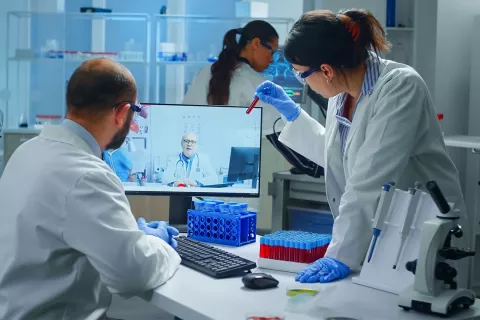
In the first part of this series, we discussed what actually a medical writer does. In this segment, we will talk in detail about the process of medical writing.
Draft preparation could be an extensive and time-consuming process, so it is critical for medical writers to work in realistic timelines and ensure timely delivery of drafts. Generally medical writers provide a couple of incremental drafts to the client, followed by a final version of the document.
Once the source documents are delivered from client’s end, it is the responsibility of a medical writer to analyze that information, summarize it correctly and add the relevant information in the corresponding sections of the template.
To ensure fast approvals for submissions, medical writers must be acquainted with regulatory guidelines for document preparation aspects such as the form of tables, figures, listings to be used while presenting the information in draft template. In case of any queries or gaps in knowledge transfer between the client and medical writer, an immediate communication should occur to resolve the queries. The quicker this process is, the faster will be the completion of the final draft.
Coordinating Internal Review
This phase of medical writing involves rigorous project management and coordination. The document undergoes content review/peer- review before it is shared with the client for their evaluation. The best approach to follow in order to ensure that document adheres to the client template, subject matter relevance, and regulatory guidelines is, to have a synchronized document review process. The cross-functional review may include other team members from various functional areas such biostatistics, medical, safety, management, and other interested individuals. Medical writer should consider incorporating input from experts while ensuring feasibility at the site level, patient safety and trial objectives. Depending upon the feedback and comments of the reviewing committee, medical writer and the document owner which is generally a medical monitor can collect, arrange, and classify the draft as “accepted”, “rejected” or “need more work”.
Although the document majorly comprise scientific content, medical writers should try to make it readable and user-friendly. It is the responsibility of the medical writer to ensure that document is free from errors like grammar, spellings, formats, citations, cross reference, index, etc. In the end, the final draft should align with the style guide provided by the client.
Compiling the Final Draft
The final draft after review of document entails a clean copy as per comment logs and client feedbacks. It is advisable to keep all the versions of the draft handy so as to easily go back for quick reference if required. Before this draft moves out, a formal QC should be performed for final fine tuning of document. The sources should be verified for accuracy, information should be complete and consistent. To avoid any discrepancies or disagreements from client’s end, make sure to record the chain of communication during the entire process of writing and reviewing phase.
In Conclusion
No matter how complex is the project, a medical writer should have a clear vision of requirements and timelines. Freyr has an extensive experience and capability of presenting the data as per the client requirements. The team can author drafts, coordinate client review, perform quality check, and do the project management of medical writing activities. Our medical writing team is a pool of medically qualified (Medical and Paramedical), skilled and experienced professionals from pharma and clinical research industries.










